7. Lake Urmia in Iran
Lake Urmia is the endorheic salt lake in Iran. As this lake is near Caspian sea, the saltiness in the lake is due to the result of mixing sea water with fresh water. Archaeological excavations of the settlements in the area have found artefacts that date from about 7,000 BCE. This salt lake is formed when the water flowing into the lake containing salt or minerals and cannot leave the lake, because the lake is endorheic (no outlet). The water then evaporates, leaving behind any dissolved salts and thus increasing its salinity, making a salt lake an excellent place for salt production.
This lake is named in pure tamizh, but before going to the explanation in tamizh, let us see what wikipedia says about the meaning of lake urmia.
From Wikipedia -
"Richard Nelson Frye suggested an Urartian origin for the name while T. Burrow connected the origin of the name Urmia to Indo-Iranian urmi- "wave" and urmya- "undulating, wavy". A more likely etymology would be from Neo-Aramaic Assyrian-Chaldean spoken by the shrinking number of the ancient Christian population of the nearby city of Urmia, consisting of "ur" meaning city (even in tamizh, 'ur' means city), and "mia" meaning water. Together, the "water city", what Urmia city is: a city on the waters of the eponymous lake. "
Meaning of Urmia in Tamizh
In Tamizh, salt - is called 'Uppu / Uvar' and lake - is called 'eri'. In pure tamizh it is also called as,
- salty lake called as 'Uvar neer' - உவர் நீர்
- salty sand is called as 'Uvar mann' - உவர்மண்
- lands where salt is formed as 'Uvar kalam' - உவர்க்களம்
Urmia -> Uvar + mann + eri = Urmaneri, which is then transformed as Urmari / Urmia
As the lake is endorheic, it is a kind of sink - means urinci in tamizh.
களர்நிலம் - Kalar nilam means salt land. Kalar is also a name of the village in Iran which is near Caspian sea. How was it named appropriately according to it's salty characteristics in tamizh ??
This lake urmia is also considered as homeland for parsa / parsua tribes from India, after whom this land was called as persia.
How did the lake was named using tamizh words which represents the same meaning about salt ??
According to tamizh sangam literature, landscapes were classified into five divisions.
- Kurinji landscape - the hilly region,
- Mullai landscape - the forest land,
- Mardam / Marutham landscape - the cultivable land
- Neidal / Neytal landscape - the sea-shore, associated with pining.
- Palai landscape - desert, associated with separation.
The kurinji and Neytal landscapes were named for some of the places in Iran, exactly as per the classification mentioned in the sangam literature
Neital / Neytal (நெய்தல்)
There is a place in Iran named as 'Neytal', which is near Caspian sea. As per sangam literature, neytal region represents sea shore regions.
How did the place in Iran was named exactly according to the classifications of tamizh Sangam literature ??
Each landscape has separate god to worship as mentioned in sangam texts. Kadalon is the water god, who was worshiped in Neital region. The inhabitants were known as parathavar, nulaiyar and umanar whose occupations included fishing, coastal trade, pearl diving and salt manufacturing.
- Parathavars - were sailors and fishermen,
- Nulaiyar - were the divers
- Umanars - the salt manufacturers and merchants.
Lake Urmia is near to this place and hence umanars manufactured salt and did salt trading. Their settlements were known as pakkam or pattinam, which were maritime trading ports. The headmen were known as Thuraivan, Pulampan and Serppan.
Paravars are related to Parthians kings of Iran and Pandya Kings. The link between them will be uncovered in the next post.
Kurinji - There is also a place in Iran named as 'Kurinji'.
According to Wikipedia -
" Kurijan is a village in Sabzdasht Rural District, in the Central District of Kabudarahang County, Hamadan Province, Iran."
Hamadan province is located in the 'Zagros Mountain'. As this place is near to hilly / mountain region, it was named as 'Kuriji', which is also matching with the description mentioned in the sangam literature !!
The places in Iran, Neytal and Kurinji are not only named in tamizh, but also matching with the landscape divisions mentioned in the sangam literature !!
Another important point to be noted here is kurinji people's deity is Lord Murugan. In the previous part (part2), I have mentioned about Lord Kartikeya / Murugan being worshiped in Iran and many places were named after him. The reason behind that is wherever kurinji people had spread / settled, they worshiped Lord Murugan.
Yazidi people were one of the kurinji people, as they inhabited near Caucasus mountains.
This is also confirming that there was an extensive tamizh civilization in Iran in the past, whose records were burned or destroyed during later period of time. Several thousand years before Iran was ruled by major and minor tamizh kings and so named many places in tamizh as per the rules of literatures, worshiped corresponding regional gods and followed tamizh culture everywhere.
There are more connections between Zagros mountain, Tamizh and Dravidian people. This mountain is home for the most ancient civilization in Iran called as 'Elamites'. Elamites expanded their region all over the Iran and Mesopotamia and their established their land in Iran called 'Illam'. In tamizh, Illam - means home, scholars are suggesting that the elamite language is related to proto-dravidian language.
In this Ilam province, there is place called 'Aivan'.
From Wikipedia -
" Gav sar - Eyvan, alternately spelled Eywan or Aivan. Eyvan is one of the counties of Ilam province in western Iran "
But, the truth is Aivan - denotes Ay dynasty of kings from ancient tamizhakam and their symbol is elephant. Ay group - means cowherd group of people and they were also called as 'Ayar'. They held major trading ports near south western region of tamizhakam and from there many expensive spices, herbs, medicines, precious metals, crops were exported to Persian countries.
Interesting point to be noted here is, Ay clan was one of the significant major hill-chiefs of early historic tamizhakam (south India). More details about Ay dyansty and their relationship with Iran is explained in the first point of this part1 post.
Izeh also known as Malāmir is a city and capital of Izeh County, Khuzestan Province, Iran. In the Elamite period it was known as Ayapir and sometimes Ayatem. This is adding more strength to the connection between elamites of Iran and Ay dynasty kings of ancient tamizhakam. Ay kings were major chieftains and they ruled some of the regions in Iran, also served as a vassal for Pandya Kings.
Illam -> Aivan connecting -> Ay dynasty
Elamite Izeh -> Ayapir / Idhaj connecting -> Ay dynasty
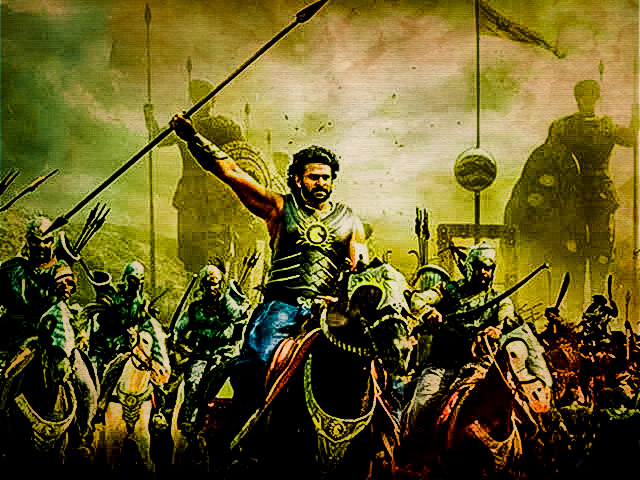
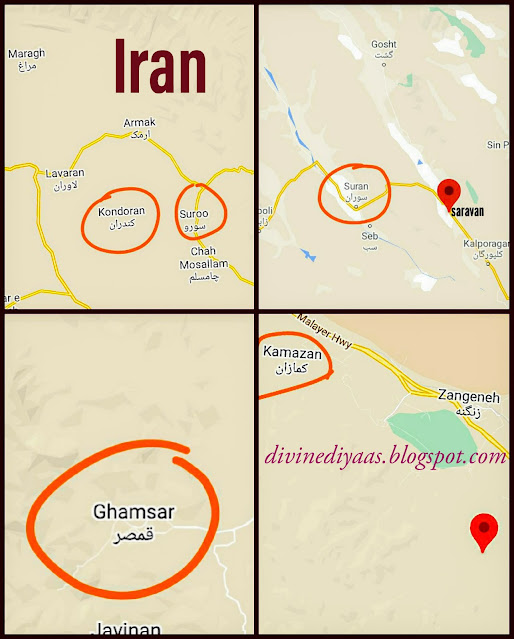
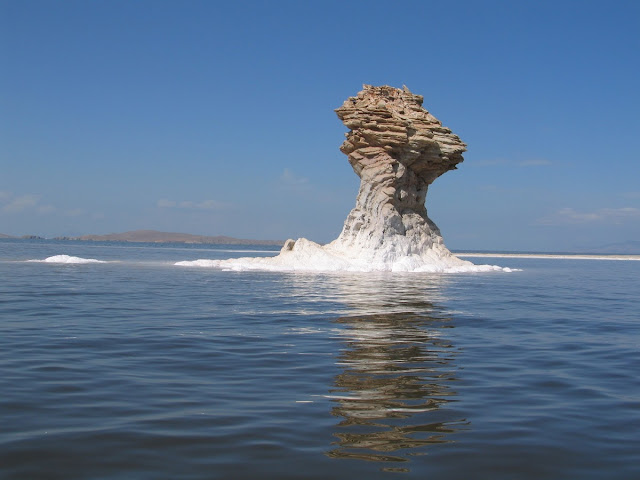
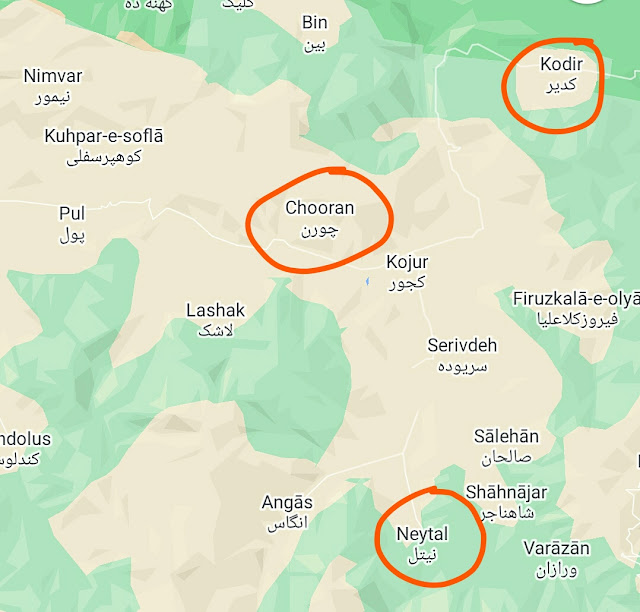
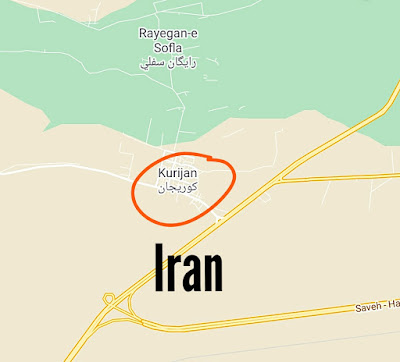
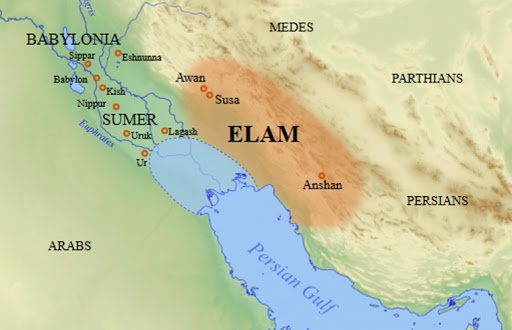
No comments:
Post a Comment